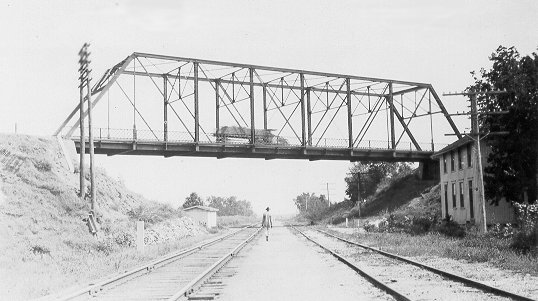|
K-TRUSS
1933 Okmulgee 5612 0480X Pharoah & Co.
The highway department introduced the last truss type to Oklahoma in the 1930s when it designated as a standard design the K-truss and used this through truss bridge into the early 1950s. The celebrated Quebec Bridge over the St. Lawrence River in 1917 first demonstrated the value and possibilities of this design. The K form derived from the way engineers subdivided the panels, a proceedure that afforded more strength and economy as it also increased the length of the structure. Builders also liked how the design reduced secondary stresses and made simpler the task of erecting a big bridge in the field. Riveted and with a curved top chord, the K through truss became a familiar sight on primary roads, its span lengths varying from 140 to 210 feet. The state indicated how this design would be used in Oklahoma when in 1933 Pharoah and Company erected a 210-foot truss, combined with steel girder spans, to carry U.S. 266 over the Deep Fork River near Henryetta. One of the first K-trusses and the largest in its class, this bridge also makes a pleasing appearance with its distinctive arrangement of struts and substruts (Figure 68).

Figure 68. ODOT chose the K-truss as a standard bridge type during the 1930s. A reliable and efficient design for main-traveled roads, the K-truss has been widely used throughout the state. Bridge 5612 0480 X spans the Deep Fork of the Canadian River near Henryetta.
|



